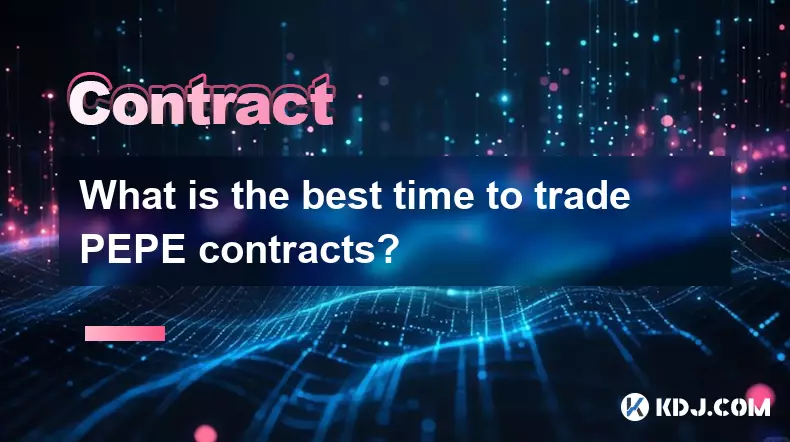-
 bitcoin
bitcoin $124586.364639 USD
0.62% -
 ethereum
ethereum $4670.671710 USD
3.33% -
 xrp
xrp $2.983701 USD
0.18% -
 tether
tether $1.000175 USD
-0.03% -
 bnb
bnb $1209.430642 USD
2.76% -
 solana
solana $231.365861 USD
0.51% -
 usd-coin
usd-coin $0.999665 USD
-0.02% -
 dogecoin
dogecoin $0.264657 USD
4.46% -
 tron
tron $0.346415 USD
1.60% -
 cardano
cardano $0.871586 USD
3.70% -
 chainlink
chainlink $23.451270 USD
7.56% -
 hyperliquid
hyperliquid $46.860071 USD
-2.96% -
 ethena-usde
ethena-usde $1.000120 USD
0.04% -
 sui
sui $3.611279 USD
1.08% -
 stellar
stellar $0.407149 USD
0.96%
How to use currency-based perpetual contracts for hedging?
Currency-based perpetual contracts provide businesses and individuals with a flexible and cost-effective hedging tool to manage currency risk, allowing them to offset potential losses from exchange rate fluctuations.
Oct 24, 2024 at 09:03 pm

Perpetual contracts are a type of derivative that allows traders to speculate on the future price of an underlying asset without having to take delivery of the physical asset. Currency-based perpetual contracts are specifically designed for hedging against fluctuations in exchange rates, making them a valuable tool for businesses and individuals exposed to currency risk.
Steps to Hedge Using Currency-Based Perpetual Contracts:- Identify the Currency Pair: Determine the currency pair you wish to hedge against, e.g., AUD/USD.
- Choose an Exchange: Select a reputable cryptocurrency exchange that offers currency-based perpetual contracts, such as OKX.
- Open a Trading Account: Create an account on the exchange and fund it with the appropriate cryptocurrency to trade the contract.
- Place a Hedging Order: Place an order in the opposite direction of your exposure to the currency. For example, if you are exposed to a short position in AUD/USD, you would place a long order on the AUD/USD perpetual contract to offset your risk.
- Adjust Position Size: Calculate the appropriate position size based on your level of exposure and risk tolerance. Adjust the position size accordingly.
- Monitor the Contract: Monitor the price of the underlying currency pair and make adjustments to your position as needed to maintain the desired level of protection against currency fluctuations.
- Close the Hedge: Once the hedge is no longer required, close the position by placing an order in the opposing direction of your previous order. For example, if you had placed a long order to hedge against short exposure to AUD/USD, you would now place a short order to close the hedge.
- 24/7 Trading Hours: Perpetual contracts can be traded 24 hours a day, 7 days a week, providing flexibility in hedging your exposure.
- Leverage: Exchanges offer leverage on perpetual contracts, allowing traders to amplify their positions and potential profits.
- Cost-Effective: Perpetual contracts are more cost-effective than traditional hedging methods, such as forward contracts or options.
- Real-Time Execution: Orders are executed in real time, providing quick and efficient hedging against currency fluctuations.
- Extreme Volatility: Cryptocurrency markets can experience extreme volatility, potentially leading to significant losses.
- Leverage Risk: Trading with leverage can magnify both profits and losses.
- Margin Calls: If the market moves against you and your margin falls below a certain level, the exchange may issue a margin call requiring you to deposit additional funds.
Currency-based perpetual contracts offer a powerful hedging tool for managing currency risk. By following the steps outlined above and understanding the associated risks, businesses and individuals can protect their exposure to currency fluctuations while accessing the flexibility and cost-effectiveness of perpetual contracts.
Disclaimer:info@kdj.com
The information provided is not trading advice. kdj.com does not assume any responsibility for any investments made based on the information provided in this article. Cryptocurrencies are highly volatile and it is highly recommended that you invest with caution after thorough research!
If you believe that the content used on this website infringes your copyright, please contact us immediately (info@kdj.com) and we will delete it promptly.
- BlockDAG, DOGE, HYPE Sponsorship: Crypto Trends Shaping 2025
- 2025-10-01 00:25:13
- Deutsche Börse and Circle: A StableCoin Adoption Powerhouse in Europe
- 2025-10-01 00:25:13
- BlockDAG's Presale Buzz: Is It the Crypto to Watch in October 2025?
- 2025-10-01 00:30:13
- Bitcoin, Crypto, and IQ: When Genius Meets Digital Gold?
- 2025-10-01 00:30:13
- Stablecoins, American Innovation, and Wallet Tokens: The Next Frontier
- 2025-10-01 00:35:12
- NBU, Coins, and Crypto in Ukraine: A New Yorker's Take
- 2025-10-01 00:45:14
Related knowledge

What is the difference between futures and perpetual contracts for Bitcoin?
Oct 02,2025 at 11:54pm
Understanding Bitcoin Futures Contracts1. Bitcoin futures are derivative instruments that allow traders to speculate on the future price of Bitcoin at...

What is the best time to trade PEPE contracts?
Oct 03,2025 at 11:54am
Understanding PEPE Contract Volatility1. PEPE contracts exhibit extreme price fluctuations due to their meme-based nature and low market cap. Trading ...

What are the common mistakes to avoid with Bitcoincoin contracts?
Oct 03,2025 at 08:54am
Emerging Trends in the Cryptocurrency Market1. Decentralized finance (DeFi) platforms continue to expand their influence across the blockchain ecosyst...

What is the maintenance margin for Bitcoin contracts?
Oct 02,2025 at 01:36am
Decentralized Exchanges Gain Momentum in 20241. Decentralized exchanges (DEXs) have seen a significant rise in trading volume, surpassing centralized ...

How to use technical analysis for trading XRP contracts?
Oct 03,2025 at 01:18pm
Understanding Price Patterns in XRP Futures1. Identifying chart patterns such as triangles, head and shoulders, and double tops or bottoms can provide...

What does "longing" PEPE contracts mean?
Oct 03,2025 at 11:54pm
Understanding Decentralized Exchanges in the Crypto Ecosystem1. Decentralized exchanges (DEXs) operate without a central authority, allowing users to ...

What is the difference between futures and perpetual contracts for Bitcoin?
Oct 02,2025 at 11:54pm
Understanding Bitcoin Futures Contracts1. Bitcoin futures are derivative instruments that allow traders to speculate on the future price of Bitcoin at...

What is the best time to trade PEPE contracts?
Oct 03,2025 at 11:54am
Understanding PEPE Contract Volatility1. PEPE contracts exhibit extreme price fluctuations due to their meme-based nature and low market cap. Trading ...

What are the common mistakes to avoid with Bitcoincoin contracts?
Oct 03,2025 at 08:54am
Emerging Trends in the Cryptocurrency Market1. Decentralized finance (DeFi) platforms continue to expand their influence across the blockchain ecosyst...

What is the maintenance margin for Bitcoin contracts?
Oct 02,2025 at 01:36am
Decentralized Exchanges Gain Momentum in 20241. Decentralized exchanges (DEXs) have seen a significant rise in trading volume, surpassing centralized ...

How to use technical analysis for trading XRP contracts?
Oct 03,2025 at 01:18pm
Understanding Price Patterns in XRP Futures1. Identifying chart patterns such as triangles, head and shoulders, and double tops or bottoms can provide...

What does "longing" PEPE contracts mean?
Oct 03,2025 at 11:54pm
Understanding Decentralized Exchanges in the Crypto Ecosystem1. Decentralized exchanges (DEXs) operate without a central authority, allowing users to ...
See all articles










































































